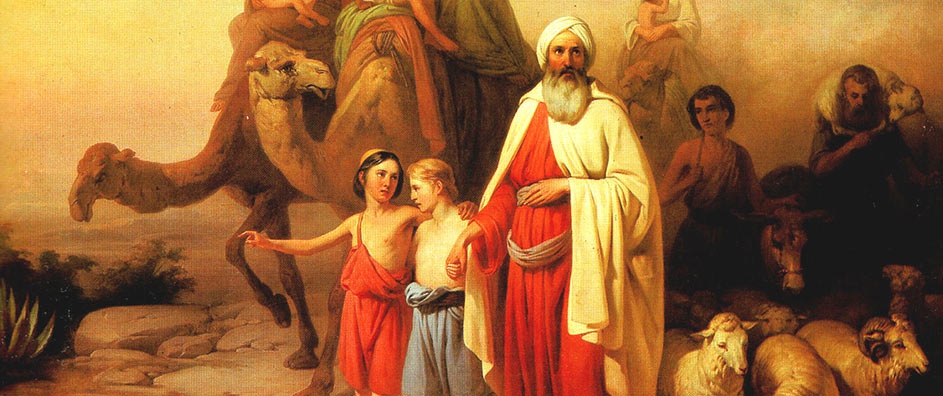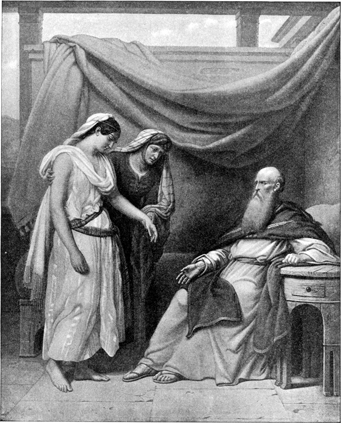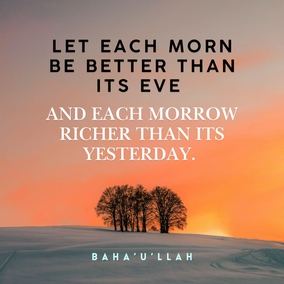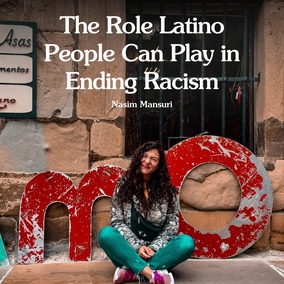The views expressed in our content reflect individual perspectives and do not represent the authoritative views of the Baha'i Faith.
We should, therefore, detach ourselves from the external forms and practices of religion. We must realize that these forms and practices, however beautiful, are but garments clothing the warm heart and the living limbs of Divine truth. We must abandon the prejudices of tradition if we would succeed in finding the truth at the core of all religions… While idolaters believe in their various idols, how can they understand the oneness of God? It is, therefore, clear that in order to make any progress in the search after truth we must relinquish superstition. If all seekers would follow this principle they would obtain a clear vision of the truth. – Abdu’l-Baha, Paris Talks, p. 136.
While King Nimrod paced back and forth, pondering the best method of eliminating the Prophet whose advent his dream and the rising star predicted, Abraham’s mother, Emtelai, must have been equally worried about what the future held in store. Knowing how frequently young women died in childbirth, she would have had reason to fear that she might not live to see the face of her child.
When she went into labor, one of the household servants would have run to fetch a midwife while another relayed the news to the father-to-be.
The father-to-be, Emtelai’s husband Terah (spelled in the Qur’án as Azar) was an educated and influential man who made a living manufacturing and selling idols.
Often whitewashed with lime or painted with red and black pigments, the idolatrous figurines of that era ranged in height from a few inches to a foot or more. Purchasers set them in the doorway of a house or business, placed them near a personal altar, or buried them under the threshold to protect the inhabitants against demons and other evil spirits. The idols were also worshiped in private family chapels, placed in curbside shrines, and entombed with the dead bodies of family members who lay moldering in a vault dug underneath the foundation of the house—a practice that could permeate the dwelling, or even the neighborhood, with a distinctly unpleasant odor.
One hopes that on the day of Abraham’s birth, his mother’s nose filled with a more pleasant scent than that of rotting flesh. Perhaps barley bread topped with sesame seeds baked in the kitchen oven, or maybe Emtelai managed to dab fragrant oil on her wrists. The midwife may have helped the labor along by giving Emtelai a medicinal wad of tree bark to chew or spreading ointment on her stomach and massaging it gently.
Terah’s other wives—tradition counts two of them—might have waited nearby, perched on stools with woven reed seats, jingling their dainty ankle bracelets and sipping a lightly alcoholic beer brewed from dates. They could have helped Emtelai sit on a birthing stool and would have stretched out willing hands to hold the newborn, wipe him clean, and wrap him in a blanket woven of linen or wool.
A naming ceremony was typically held a few days after the birth of a child, once it was clear the baby was healthy and likely to survive. Terah called his new son Abram, which means exalted father or father lifted up. In the future, as part of a special covenant, God would elongate Abram’s name to Abraham—which, for the sake of simplicity, we’ll continue to call him.
Children were important in Mesopotamia, but because it was a patriarchal society, sons were more important than daughters. Sons were the children who would continue the family business, support their parents in old age, bury them respectfully when the time came, and claim the largest share of the inheritance. The only thing better than birthing one son was having several, a feat Emetlai accomplished by producing two brothers for Abraham: Nahor, whose name means light, and then Haran, whose name is thought to refer to the town where either Terah or his father had been born.
The brothers were probably spaced two or three years apart, the customary period of time for a mother to continue breastfeeding (a practice that acts as a natural contraceptive). As the boys grew, learning to weave their way through narrow streets, they might have taken time to watch new houses being built. The materials were readily available—clay mixed with straw, molded into bricks, and dried in the hot sun of the early summer months when no rain came. The bricks were mortared together with tarry bitumen stiffened by the addition of sandy soil. Wood was used to outline doors and windows, though windows were few and most of the indoor illumination was provided by oil lamps. Roofs were made of palm tree planks covered with reeds and slathered with clay. The homes of the wealthy, typically built around a central courtyard, featured several bedrooms plus a kitchen with a pantry, a dining area, a place to bathe, and even a toilet suspended above a pit that drained into a central sewer through underground channels.
Abraham, Nahor, and Haran might also have passed many childhood hours doing what all little boys do—driving their parents crazy by emulating the antics of local wrestlers, pounding on small drums, or pleading for yet another turn at a popular board game reminiscent of backgammon. The boys probably received a little schooling, at least enough to learn how to record basic business transactions in cuneiform characters on clay tablets. And, as heirs to the family business, they would have also been expected to emulate their father by helping him with his business of making and selling idols.
The idols of that period were human figures or fantastic animals sculpted from stone, carved from wood, cast in metal, or made of clay. Terah, working in wood and stone, was respected as a masterful craftsman who could turn out several beautiful idols in a single day. As Abraham assisted his father, learning how to wield a hammer and chisel and finding out how to lure customers into the family’s store, one of the things he discovered is as true now as it was then: handmade gods and goddesses are easily broken.

















Comments
Sign in or create an account
Continue with Googleor